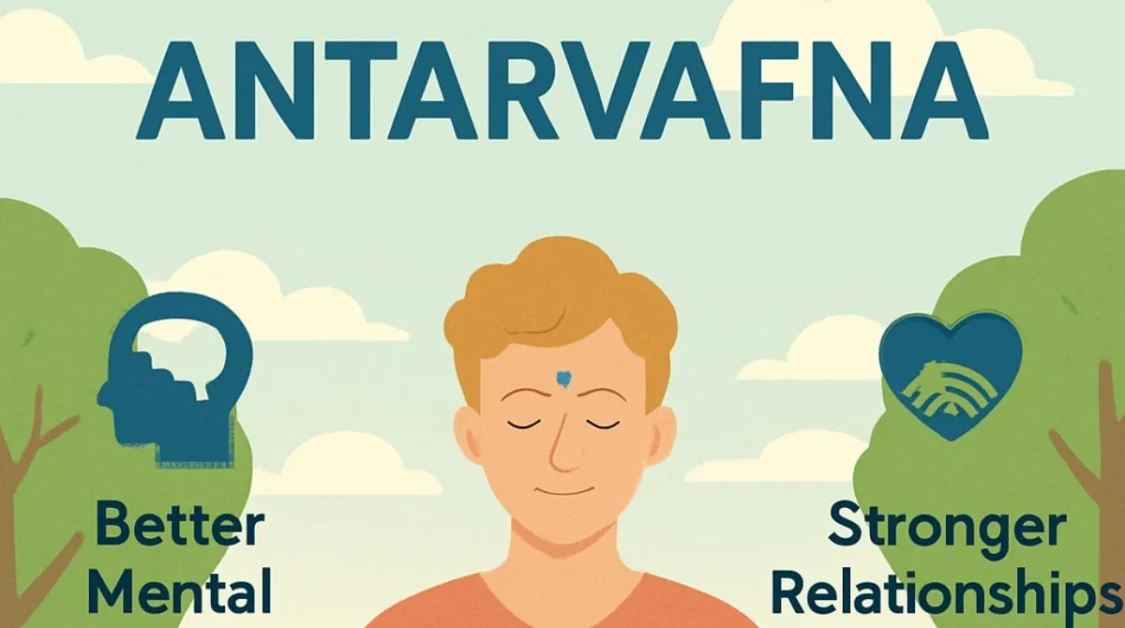In the vast realm of online erotic fiction, Literotica stands out as a premier platform where writers and readers converge to explore diverse narratives. Central to this experience is the system of Literotica tags a powerful tool that categorizes stories, making them easily discoverable and ensuring readers find content that resonates with their interests.
What Are Literotica Tags?
Literotica tags are keywords or short phrases that describe your story’s themes, genres, or specific elements. Think of them as labels that help readers find content that matches their interests. For instance a story about a steamy office romance might use tags like office affair romance, or forbidden love.Tags are essential for categorizing your story and making it discoverable.
Why Tags Are Crucial for Visibility
Tags power Literotica’s search system. When readers search for specific topics or browse tag categories, your story’s tags determine whether it shows up. Well-chosen tags can also improve your story ranking in Literotica’s internal search, increasing its chances of landing on the first page. In short tags are your story SEO strategy without them, even the best stories can get lost.
Literotica Tags
At its core, a Literotica tag is a keyword or phrase assigned to a story to describe its content or specific elements. Think of them as signposts guiding readers to stories that match their preferences. These tags can encompass:
- Genres: Romance, Sci-Fi, Fantasy, Horror
- Relationship Dynamics: Enemies-to-Lovers, Boss/Employee, Friends-to-Lovers
- Kinks and Fetishes: BDSM, Voyeurism, Foot Fetish
- Identity and Representation: LGBTQ+, Transgender, Interracial
- Narrative Styles: First Person, Epistolary (Letters/Diaries), Flash Fiction
The Evolution of Literotica Tags
Early Days (1998–2010)
When Literotica launched in 1998, tags were rudimentary. A handful of categories like Heterosexual, Lesbian, and Group Sex sufficed. As the user base grew, so did demand for specificity.
User-Driven Expansion (2010–Present)
The platform introduced tags created by users, allowing for crowdsourced categorization. This democratization of tagging led to a vast array of tags, reflecting the diverse interests of the community.
AI and Automation (Future Trends)
The emergence of new technologies like AI could change the way we tag.
The Importance of Literotica Tags
In the expansive world of online erotic literature, Literotica tags serve as essential tools that enhance both the reader’s experience and the writer’s reach. These tags are more than just labels; they are navigational aids that help users discover content that aligns with their specific interests and preferences.
1. Enhancing Story Visibility
Properly chosen tags can significantly increase a story’s visibility. When readers search for specific themes or genres, relevant tags ensure that your story appears in the search results. For example, using tags like #BDSM or #Romance can attract readers specifically looking for those themes.
2. Building Reader Communities
Tags often foster niche communities within Literotica. Readers with shared interests, such as #Polyamory or #AgeGap, can easily find stories that cater to their preferences, leading to increased engagement and discussions around those themes.
3. Reflecting Story Themes Accurately
Accurate tagging ensures that readers know what to expect. Misleading tags can lead to negative reviews and decreased reader trust. For instance, tagging a story with #Romance when it’s primarily about #BDSM can mislead readers and result in disappointment.
The Art of Choosing Effective Literotica Tags
Selecting the right tags for your Literotica stories is more than just a technical step—it’s a strategic move that can significantly enhance your story’s visibility and connect you with the right readers. Here’s how to master the art of tagging:
1. Understand Your Story’s Core Themes
Before tagging, take a moment to analyze your story. Ask yourself:
- What’s the main genre (e.g., romance, fantasy, BDSM)
- Are there unique settings (e.g., beach, historical, spaceship)
- What emotions or dynamics drive the plot (e.g., passion, tension, slow burn)
2. Balance Broad and Specific Tags
A smart tagging strategy combines broad and specific tags. Broad tags like “erotica” or “romance” attract a large audience but face stiff competition. Specific tags, often called “long-tail tags,” like “enemies to lovers” or “first-time BDSM,” target niche readers who are more likely to engage.
Example:
- Broad tags: “erotica” “romance”
- Specific tags: “slow burn romance”
3. Research Popular Tags
To find effective tags, explore Literotica tag cloud or check out top-performing stories in your genre. Look for tags with high engagement (e.g., stories with thousands of views). You can also use Google Trends to spot trending terms related to your story. For instance, if “fantasy erotica” is gaining traction, include it in your tags.
Best Practices for Using Literotica Tags
Effectively utilizing Literotica tags is crucial for writers aiming to enhance their story’s visibility and connect with the right audience. Here are some expert-backed strategies to optimize your tagging approach:
1. Be Specific, But Not Too Niche
While it’s essential to be specific, avoid overly niche tags that might limit your story’s reach. For example, instead of just using #Romance, consider more specific tags like #ForbiddenRomance or #OfficeRomance to attract a targeted audience without being too restrictive.
2. Limit the Number of Tags
Using too many tags can appear spammy and may confuse readers. Aim for 5 to 10 well-chosen tags that accurately represent your story’s content. This approach ensures clarity and maintains the story’s integrity.
3. Stay Relevant
Always ensure that the tags you use are directly related to your story’s content. Irrelevant or misleading tags can frustrate readers and harm your reputation as a writer.
4. Monitor and Adjust Tags
Over time, certain tags may become more popular or relevant. Regularly review and adjust your story’s tags to align with current trends and reader interests.
Practical Tips for Tagging Like a Pro
Mastering the art of tagging can significantly enhance your story’s visibility and engagement on platforms like Literotica. Here are some expert-backed strategies to optimize your tagging approach:
1. Be Specific, But Not Too Niche
Long-tail tags are great, but avoid being overly specific. For example, “Victorian-era lesbian romance in a haunted mansion” might be too narrow. Instead, use tags like “lesbian romance,” “historical erotica,” and “haunted mansion” to reach more readers.
2. Include Emotional and Sensory Tags
Readers often search for stories based on mood or sensory vibes. Tags like “slow burn,” “sensual,” “intimate,” or “heart-pounding” capture your story’s emotional tone and attract readers seeking a specific experience.
3. Use Plural and Singular Forms
Some readers search for “office romance” while others type “office romances.” Including both can increase your visibility, but don’t overdo it to avoid redundancy.
4. Leverage Seasonal or Trending Tags
For holiday or seasonal stories, use tags like “Christmas erotica,” “summer fling,” or “Halloween seduction” to attract readers during specific times of the year.
5. Test and Refine
Tagging is an ongoing process. Start with a set of tags, monitor performance, and tweak as needed. Replace underperforming tags with ones that align with current trends.
How to Use Literotica Tags Effectively
Mastering the art of tagging on Literotica is essential for both readers seeking tailored content and writers aiming to enhance their story’s visibility. Effective use of tags ensures that stories are discoverable, accurately represented, and reach the right audience. Here’s a comprehensive guide to using Literotica tags effectively:
1. Be Specific and Accurate
Instead of relying on broad tags like “Romance” or “Erotica,” opt for more specific tags that precisely describe your story’s content. For instance, use tags like “Office Romance,” “Forbidden Love,” or “BDSM” to provide clarity and attract readers interested in those particular themes.
Accuracy is paramount. Misleading tags can lead to reader dissatisfaction and negative feedback. Always ensure that the tags you choose genuinely reflect the core themes and elements of your story.
2. Use a Balanced Mix of Tags
Incorporate both broad and niche tags to maximize your story’s reach. Broad tags help attract a general audience, while niche tags cater to specific interests. For example, combining “Romance” with “Age Gap” or “Fantasy” with “Vampires” can draw in diverse readers.
However, avoid over-tagging. Using too many tags can dilute the focus of your story and may confuse potential readers. Aim for 5 to 10 well-chosen tags that accurately represent your content.
3. Stay Updated with Trending Tags
Literotica’s community and trends evolve over time. Regularly monitor popular tags to ensure your story remains relevant and discoverable. Incorporating trending tags can increase your story’s visibility among readers interested in current themes.
4. Reflect Your Story’s Content Honestly
Always choose tags that truthfully represent your story’s themes and elements.Misleading tags might attract clicks but can result in negative feedback and poor ratings.Stay transparent with your readers to build trust and credibility.
5. Monitor and Adjust Your Tags
After publishing, observe how your story performs and how readers respond to the tags. If certain tags are leading to higher engagement, consider emphasizing them in future stories. Conversely, if some tags are underperforming, it might be worth replacing them with more relevant or trending ones.
Commonly Used Literotica Tags and Their Meanings
To provide clarity, here’s a table showcasing some popular Literotica tags and their typical meanings:
| Tag | Description |
| #BDSM | Stories involving bondage, discipline, dominance, submission, sadism, and masochism. |
| #Fetish | Content based on specific sexual preferences or acts. |
| #Incest | Stories involving family members in a sexual context. |
| #M/M, #F/F, #M/F | Denote the gender dynamics of the characters involved. |
| #Threesome | Indicates that the story involves three participants in sexual activity. |
| #Non-consensual | Refers to stories involving sexual activity without consent, often controversial and requires careful consideration. |
| #Romance | Focuses on the romantic aspect of the story, often with a happy ending. |
Popular Literotica Tags to Consider
When crafting your Literotica stories, selecting the right tags is crucial for reaching your intended audience and enhancing discoverability. While the platform offers a vast array of tags, certain ones consistently attract readers due to their popularity and specificity. Here’s a curated list of popular Literotica tags to consider:
1. Trending & Broad Appeal Tags
These tags encompass widely recognized themes that appeal to a broad audience:
- #Romance: Ideal for stories centered around love and relationships.
- #Erotica: A general tag for explicit adult content.
- #BDSM: For stories exploring bondage, discipline, dominance, submission, and related themes.
- #Incest: Stories involving taboo familial relationships.
- #Group: Narratives featuring multiple participants.
- #Threesome: Focusing on stories with three participants.
- #Lesbian: Stories depicting romantic or sexual relationships between women.
- #Gay: Focusing on relationships between men.
- #Transgender: Stories involving transgender characters and themes.
2. Character & Roleplay Tags
These tags highlight specific character dynamics and roleplay scenarios:
- #Teacher: Stories involving educators and students.
- #Student: Narratives centered around students.
- #Boss: Focusing on workplace power dynamics.
- #Secretary: Stories featuring secretarial roles and relationships.
- #MILF: Mothers I’d Like to… stories.
- #Cougar: Older women pursuing younger partners.
- #Virgin: Stories about characters experiencing intimacy for the first time.
3. Setting & Context Tags
These tags provide context about the story’s setting or situation:
- #Office: Workplace-based narratives.
- #Fantasy: Stories set in fantastical worlds.
- #Sci-Fi: Science fiction-themed tales.
- #Historical: Set in past eras.
- #Vampire: Stories involving vampires.
- #Werewolf: Lycanthropic themes.
- #Superhero: Featuring characters with superhuman abilities.
4. Kink & Fetish Tags
For stories exploring specific kinks and fetishes:
- #Bondage: Stories involving restraint.
- #Spanking: Focusing on spanking scenarios.
- #Foot Fetish: Stories centered around feet.
- #Roleplay: Characters adopting different personas.
- #Public: Intimacy in public settings.
- #Exhibitionism: Stories about displaying oneself.
- #Voyeurism: Watching others engage in intimacy.
5. Genre-Specific Tags
These tags cater to specific genres and subgenres:
- #Paranormal: Stories involving supernatural elements.
- #Futuristic: Set in future timelines.
- #Medieval: Stories set in medieval times.
- #Mythology: Incorporating mythological themes.
- #Cyberpunk: High-tech, dystopian futures.
- #Steampunk: Victorian-era technology and aesthetics.
6. Role & Identity Tags
These tags focus on character roles and identities:
- #Domination: Stories focusing on dominance.
- #Submission: Exploring submissive roles.
- #Switch: Characters who alternate between dominant and submissive roles.
- #Sissy: Stories involving gender role reversal.
- #Futanari: Characters with both male and female anatomical features.
7. Miscellaneous Tags
Other notable tags include:
- #Taboo: Stories involving forbidden themes.
- #Cheating: Infidelity narratives.
- #Age Gap: Relationships with significant age differences.
- #Incest: Taboo familial relationships.
- #Rape: Non-consensual themes (note: often controversial and may violate platform guidelines).
Conclusion
Literotica tags are more than just keywords they’re your ticket to reaching readers who’ll love your stories. By understanding your story’s themes, balancing broad and specific tags, and optimizing for SEO, you can boost your story’s visibility and build a loyal readership. Avoid common pitfalls like over-tagging or using irrelevant tags, and don’t be afraid to experiment and refine your approach.










